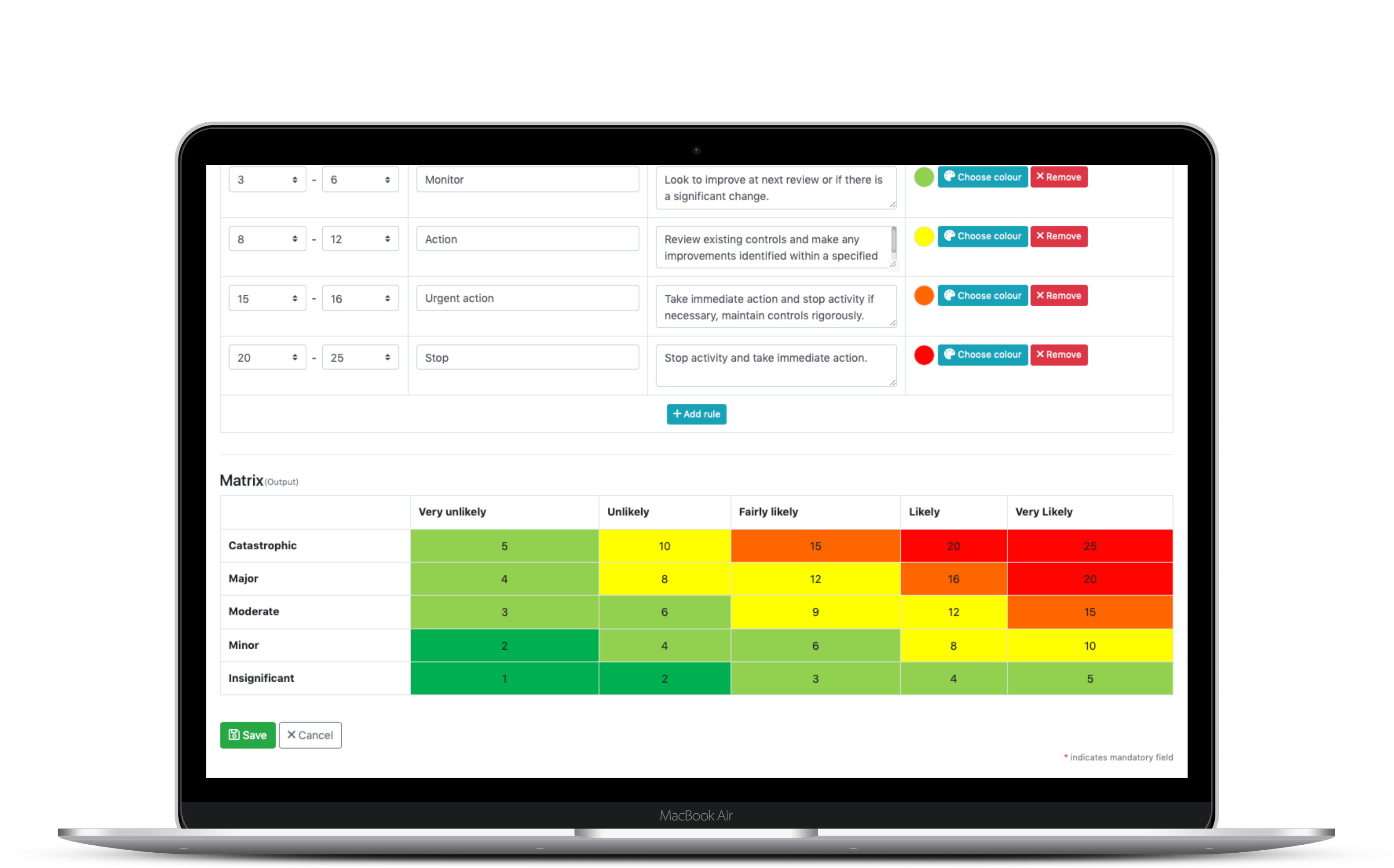At present, school safety risks, such as risk management software for schools, are one of the key management tasks of the education system. There are hidden risks in schools, which may be triggered and evolve into emergencies under certain conditions.
Carrying out risk management software for schools and hidden danger investigation is a concrete manifestation of the school’s advanced prevention of safety, the establishment of a progressive, three-dimensional accident hidden danger prevention system of pre-teaching, forecasting, early warning, and prevention, and the realization of the advance of emergency management.
School risks are variable and uncertain, so risk identification is a long-term, continuous, and iterative process. It is necessary to identify, judge, and classify risks in the surrounding environment of the campus, school buildings, canteens, laboratories, sports activities, and other places, as well as firefighting facilities and personnel conditions. School units need to carefully identify and master the sources and areas of danger, carefully analyze potential dangers, existing conditions, triggering factors, and possible hazards, conduct scientific assessments, determine risk types, probability of occurrence, and damage consequences, and take relevant safety precautions measure.

An effective measure for school safety risk management is to establish a school safety risk and hidden danger list management mechanism. To carry out the list, ledger, and catalog management of various risks and hidden dangers in the school, and to record in detail the types of risks and hidden dangers, major risks, preventive measures, and inspectors’ and other main situations, it is necessary to strengthen the dynamic management of information, update the information on potential risks in a timely manner, and ensure the authenticity and reliability of the information.
Information on the investigation and management of potential risks should be kept for a long time for inquiry, traceability, and evaluation.
The UK education system as a whole has a unique collection of risks that, while they are all governed by the sector funding organization that oversees them, are all accountable for protecting children and vulnerable adults. All regulators anticipate that boards will have a solid risk management framework in place since this will help to demonstrate good governance and be relied upon by Ofsted for a larger inspection.
The risk management software for schools
Ofsted’s responsibility is to ensure that organizations offering care, education, and training to children and students in England do so to a high standard. This entails:
- Inspecting childcare, adoption and foster care organizations, primary teacher training programs, some independent schools, and many other educational institutions and programs outside of higher education
- Regulating a variety of early childhood and children’s social services to ensure that they are appropriate for children and young people who may be at risk.
It is obvious that larger, possibly multi-site organizations, operate in a risky environment. However, it is crucial for every organization to have a strong risk management system in place as part of a governance structure. This enables the Board and the Executive to show that the organization manages a transparent and up-to-date view of its risk exposure and ultimately reports this to stakeholders, most often in the Annual Report and Accounts.
While it is still true that there are numerous approaches to thinking about and responding to risk, automating the process in a way that is both cost-effective and allows for real-time reporting of the situation helps the board make sure that its risk appetite is fully ingrained throughout the organization. By achieving this, it is ensured that risks in all areas of operation are recognized, evaluated, and given the necessary risk mitigation measures to guarantee they are in place and functioning as intended. While in an educational setting, this may ultimately have financial ramifications, it must also reflect:
- Children’s and vulnerable adults’ safety
- Attendance
- Retention, academic success
- delivery of instruction and standards, as well as
- Safety and health
- Security and data integrity
By using risk management software for schools, the effectiveness and work efficiency of school safety risk management can be improved:

Risk Identification: Through the pre-established school risk list, various school risks can be quickly checked, and then, when combined with brainstorming, the initial information about school risks can be established.
Risk Assessment: Clearly describe the possibility of risk occurrence and the degree of adverse impact caused by risk occurrence, and give quantitative evaluation criteria; through risk scoring, determine the severity of the risk and identify major and important risks.
Risk response: The risk register software is used to assign specific attention to each risk, and the concerned person formulates reasonable risk management measures on the basis of risk assessment.
Supervise implementation: The risk concern person supervises the implementation and implementation of risk management measures, records the process of risk management; analyzes and compares the effect of the implemented risk management measures and the degree of compliance with the expected goals; monitors the risk level; issues risk warnings; regularly identifies and evaluates risks; forms closed-loop management of risk.
Risk report: The risk management software for schools software provides professional-level risk assessment charts, including risk heat maps, risk ranking charts, risk trend charts, etc., enabling interactive viewing and image download. At the same time, the risk assessment results are automatically formed into a report according to the design format and output to an Excel document for easy editing and printing.
Risk Communication: Users can share, exchange, analyze, and discuss risk information and collaborate in management, which is convenient for users to analyze risk characteristics in-depth, gain insight into risk interests, and collaboratively formulate and consistently implement risk management measures.
Knowledge management: Through the risk management software for school, build a school risk management knowledge base and case base, integrate risk information, activity background, management and control experience, and good practices, accumulate school risk management results, and promote knowledge inheritance and dissemination through the review of previous risk registers to provide a useful reference and reference for current risk management.
Maybe you are interested:
http://tapchiai.net/huong-dan-mua-ban-quyen-photoshop-gia-re-hon-nhieu-so-voi-gia-hang.html







